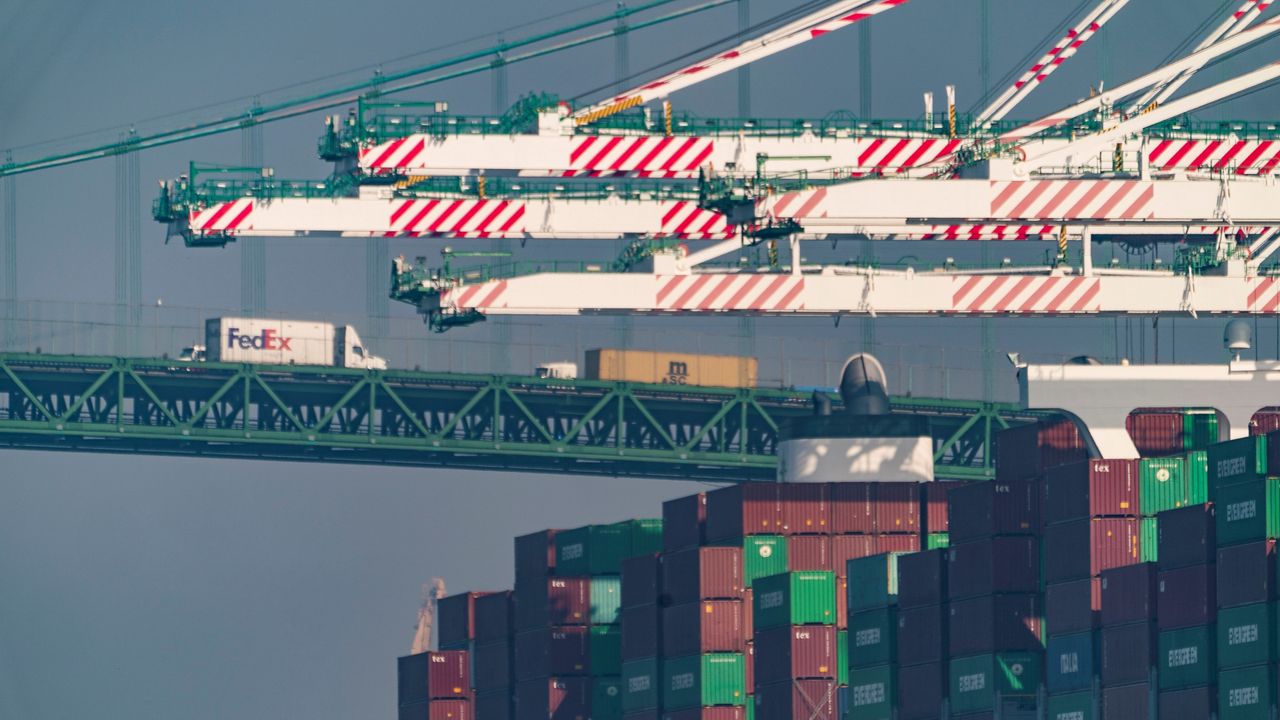LONG BEACH, Calif. (CNS) — The Port of Long Beach has made significant progress in reducing air pollution emissions in 2022 and the port is well on its way to meet its goals, according to a new study released Monday.
What You Need To Know
- The port’s annual emissions inventory report found that compared to 2005, diesel particulates are down by 91%, nitrogen oxides have decreased 63% and sulfur oxides have decreased by 97%, while cargo volume increased by 36%
- Progress for the annual inventory report is compared to 2005, the year before the original San Pedro Bay Ports Clean Air Action Plan was adopted
- The port’s longstanding initiatives to make operations greener also continued to have an effect, with 19% of cargo-handling equipment at terminals now zero-emissions
- “This emissions inventory is a feather in the port’s cap, and we’re celebrating, but our sights are on the ultimate goals we’ve set, including zero-emissions cargo handling by 2030 and zero-emissions trucking by 2035," Bobby Olvera, Long Beach Harbor Commission president, said in a statement
The port’s annual emissions inventory report, which was presented to the Long Beach Board of Harbor Commissioners, found that compared to 2005, diesel particulates are down by 91%, nitrogen oxides have decreased 63% and sulfur oxides have decreased by 97%, while cargo volume increased by 36%.
Progress for the annual inventory report is compared to 2005, the year before the original San Pedro Bay Ports Clean Air Action Plan was adopted.
Several factors played a role in the 2022 study year, including activity efficiency and operations.
By mid-year, shipping congestion related to the coronavirus pandemic had subsided, and programs put into place further eased congestion, such as vessel queuing, and reduced the number of ships waiting at anchor, according to port officials.
The port’s longstanding initiatives to make operations greener also continued to have an effect, with 19% of cargo-handling equipment at terminals now zero-emissions.
“We’re proud of our green programs and commitment to sustainability,” Bobby Olvera, Long Beach Harbor Commission president, said in a statement. “This emissions inventory is a feather in the port’s cap, and we’re celebrating, but our sights are on the ultimate goals we’ve set, including zero-emissions cargo handling by 2030 and zero-emissions trucking by 2035.”
Mario Cordero, CEO of the port, in a statement, touted the port’s “impressive record” of environmental achievement. He emphasized the importance of partnership and cooperation with industry partners, labor and “each part of the supply chain,” who does business with the port, for making this accomplishment happen.
“Everyone deserves a great deal of credit for their willingness to do the right thing for the planet, maintaining that commitment through some challenging recent years, and helping us reach these green milestones,” Cordero said in a statement.
The study also represents improvement over 2021, during the height of the pandemic and global supply chain congestion, resulting in higher emissions in the San Pedro Bay.
Compared to that year, in 2022 diesel particulate matter was down by 28%, nitrogen oxides declined by 28% and sulfur oxides decreased by 7%, even though container traffic dipped only by 3%, according to port officials.
Greenhouse gas emissions were down 1% in 2022, compared to the 2005 baseline, although the category was down by 16% compared to the 2021 survey.
The annual emissions inventory is reviewed by the U.S. Environmental Protection Agency, California Air Resources Board and South Coast Air Quality Management District.



